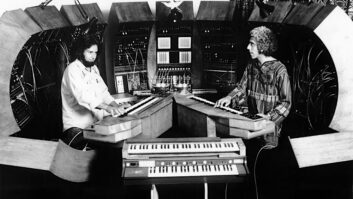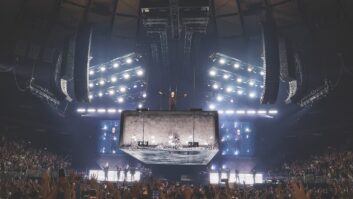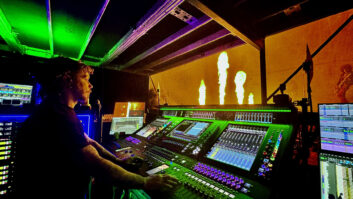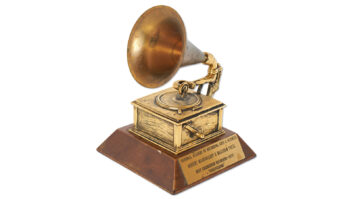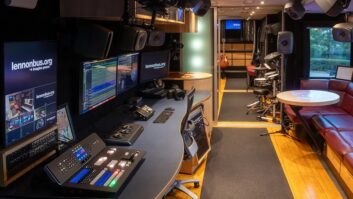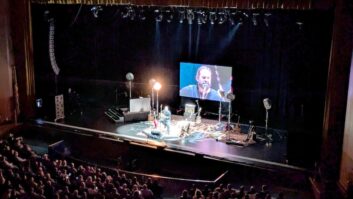Danny Leake, Stevie Wonder’s FOH Engineer, with Antelope Audio Zen Studio in foreground.
Santa Monica, CA (February 6, 2015)—Stevie Wonder has been touring the U.S. performing his complex 1976 double-album, Songs in the Key of Life album, backed by a horn section, choir, background singers, a 10-piece orchestra and his 11-member band. Mixing the complex show each night is Wonder’s longtime FOH engineer, Danny Leake, overseeing an audio system from Eighth Day Sound that keeps everything clocked together using Antelope Audio.

“Stevie is the creative visionary, and basically, whatever he comes up with, I create the technical road map to get it done, and make sure it is achievable from a technology perspective,” he says. “On this particular tour [leg], Stevie was reproducing the original Songs in the Key of Life album. We had a much bigger band, an orchestra with strings, and a choir. Plus a bunch of things that he had done on that album that were impossible to play live. I had to find a way of taking 156 inputs of stuff and turn it into a stereo mix.”
Before the tour began, Leake met with Antelope Audio’s Marcel James to discuss using Antelope’s 10M/Trinity combination to clock both the FOH and monitor stations. “I tried using the Antelope clocking system at a friend’s studio at Marcel’s suggestion, and it wasn’t a subtle difference. Now we are using the 10M/Trinity combination to clock the entire show at 96k and it sounds really wonderful.”
In an industry conditioned to raise audio quality by focusing primarily on microphones, preamplifiers and loudspeakers, Leake was surprised at the effect Antelope’s mastering grade clock could have on the signal chain. “To me, it was more ‘analog’,” Leake explains. “As an engineer, I came up with tape in the analog days. There is a certain depth you get from that—and some of that can get ‘fuzzy’ when you go to digital. But the Antelope clocking made it sound like straight analog: all of a sudden, I had depth, I could hear things that were happening with the reverbs that were more fuzzy before.”
In addition to hearing more depth, Leake says the Antelope 10M/Trinity combination also made a difference in bringing out more detail in the stereo field: “I don’t normally mix very wide for a live show, but the Antelope clocks made a big difference in expanding the sound stage. All this enables me to maneuver better around the console. This was the very first time we used external clocking on the console, both at FOH and monitors, and I will never go back. We’ve run everything through the Antelope clocks since day one, and they have performed flawlessly — absolutely no problems.”
Leake also used the new Antelope Zen Studio on the road. With (20) analog inputs, (12) microphone preamplifiers and Antelope’s signature 24-bit/192 kHz conversion all running over a proprietary USB connection, he uses the Zen as a ‘scratchpad’ to capture recordings from every show and to check his stereo mixes from the main L-R console outputs.
“I used the Zen Studio to replace a competitor’s unit, and it really made a big difference,” Leake says. “I love the conversion, and it has a really smooth top end that I am used to hearing from Antelope’s clocks over the main P.A. I would describe the preamps on the Zen as very clear and open, with more depth and detail than on what I was using before.”
For the new leg of the tour, which starts on March 17th in Denver, Leake says it will once again be wheels up with Antelope Audio: “It has been a wonderful experience for me, and also for my monitor engineers: the better the clocking is, the better it is for the whole stereo stage and IEMs. In Steve’s case, his ears are his eyes — so the quality of a stereo mix is all important.”
Antelope Audio
www.antelopeaudio.com
